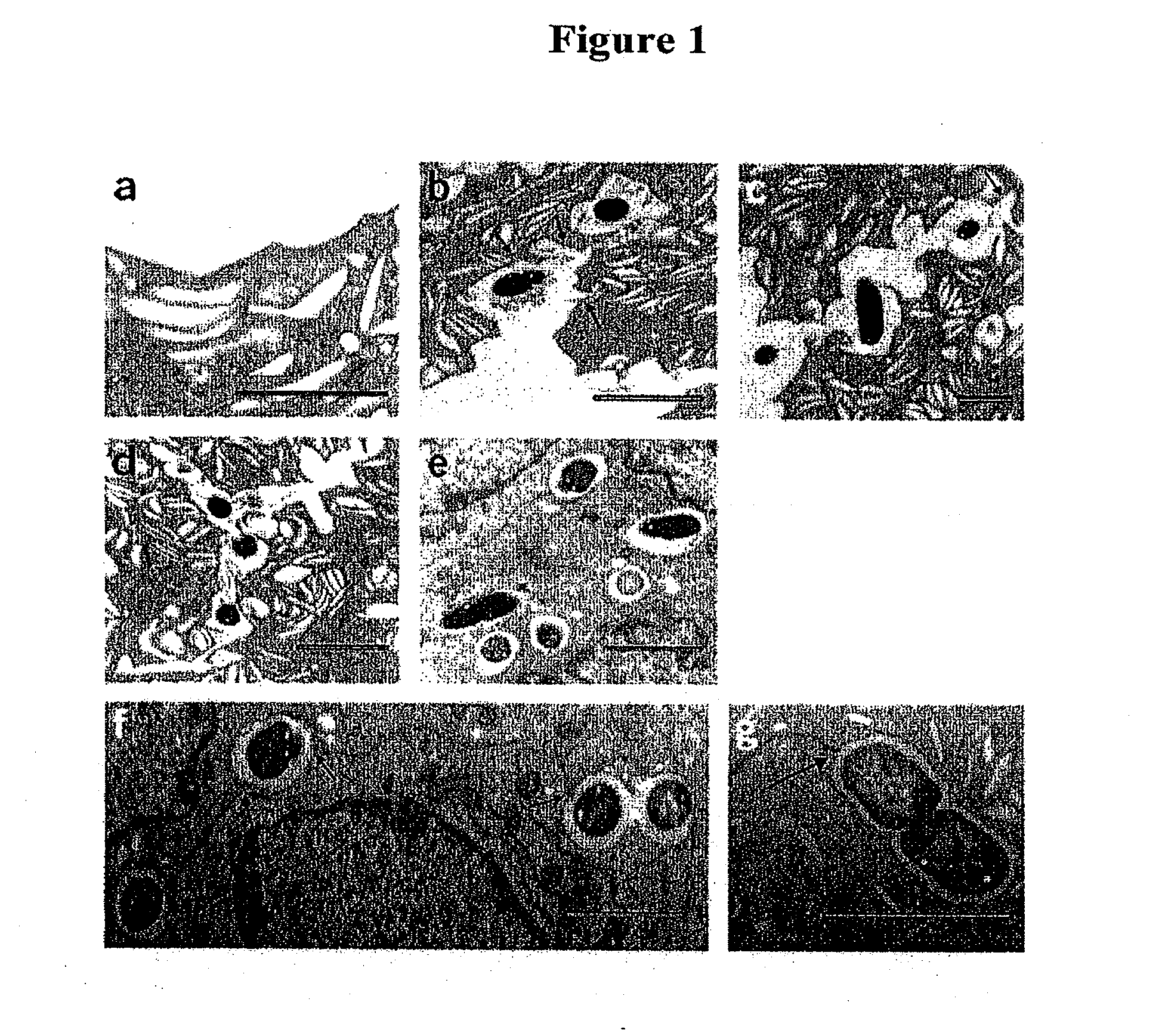Methods and compositions for treating urinary tract infections using agents that mimic or elevate cyclic amp
a technology of cyclic amp and urinary tract infection, applied in the direction of drug compositions, antibacterial agents, metabolic disorders, etc., can solve the problems of toxic to various organs of the body, continue to frustrate clinicians, and subject to sustained “suppressive” antibiotic therapy
- Summary
- Abstract
- Description
- Claims
- Application Information
AI Technical Summary
Benefits of technology
Problems solved by technology
Method used
Image
Examples
example 1
Cyclic AMP-regulated Exocytosis of Escherichia coli from Infected Bladder Epithelial Cells
Background
[0317]The superficial bladder epithelium is a powerful barrier to urine and also serves as a regulator of bladder volume, which is achieved by apical exocytosis of specialized fusiform vesicles during distension of the bladder. The present example shows that type 1 fimbriated uropathogenic Escherichia coli (UPEC) circumvents the bladder bather by harboring in these Rab27b / CD63-positive and cAMP-regulatable fusiform vesicles within bladder epithelial cells (BECs). Incorporation of UPEC into BEC fusiform compartments enabled bacteria to escape elimination during voiding and to re-emerge in the urine as the bladder distended. Notably, treatment of UPEC-infected mice with a drug that increases intracellular cAMP and induces exocytosis of fusiform vesicles reduced the number of intracellular E. coli.
[0318]The urinary tract is one of the major mucosal sites for microbial colonization. The ...
example 2
Effect of Forskolin on UPEC Invasion
[0358]A gentamicin protection assay, including 5637 BECs on 96-well plates (40,000 cells / well), was used to determine the effect of forskolin on UPEC invasion. In this example, the UPEC was either J96 or E. coli ORN103(pSH2). 50 μM forskolin was administered as a pretreatment for 15 min before infection or administered at the same time as the bacteria. The results of this assay, in units of colony counts, are summarized in Table 2 and presented in FIG. 8, and demonstrate that forskolin treatment negatively affects UPEC invasion into BECs.
TABLE 2Effect of Forskolin on UPEC InvasionDilution1234MeanSDJ96 / None1:10614044006540802062751489J96 / Forskolin1:10800640460280545225J96 / Forskolin1:107201402001080535447(pretreatment)SH2 / None1:1021660270403384024700268105178SH2 / Forskolin1:10109808260141408920105752644SH2 / Forskolin1:10886090601074095531033(pretreatment)
example 3
Efficacy of Forskolin in Reducing the CI5 E. coli Load within the Bladder
[0359]An in vivo gentamicin protection assay was used to determine the effect of forskolin on UPEC colonization of the bladder. In this example, UPEC strain CI5 was injected into the bladder via catheter to initiate a urinary tract infection. After 2 hours of infection, the mice were re-catheterized, the urine was removed, and the bladder was treated with 100 uM forskolin in PBS for 1 hour. After the forskolin treatment, 100 ug / ml gentamicin in PBS was injected into the bladder via catheter for 30 minutes. The bladders were then removed, washed in sterile PBS, and homogenized. The homogenates were plated on LB agar for overnight colony counts at various dilutions. Control mice were treated with PBS alone instead of forskolin plus PBS. The results of this assay, in units of colony counts, are summarized in Table 3 and averages are presented in FIG. 9. The top half of Table 3 represents the raw colony counts whil...
PUM
| Property | Measurement | Unit |
|---|---|---|
| weight | aaaaa | aaaaa |
| pH | aaaaa | aaaaa |
| time | aaaaa | aaaaa |
Abstract
Description
Claims
Application Information
 Login to View More
Login to View More - R&D
- Intellectual Property
- Life Sciences
- Materials
- Tech Scout
- Unparalleled Data Quality
- Higher Quality Content
- 60% Fewer Hallucinations
Browse by: Latest US Patents, China's latest patents, Technical Efficacy Thesaurus, Application Domain, Technology Topic, Popular Technical Reports.
© 2025 PatSnap. All rights reserved.Legal|Privacy policy|Modern Slavery Act Transparency Statement|Sitemap|About US| Contact US: help@patsnap.com



